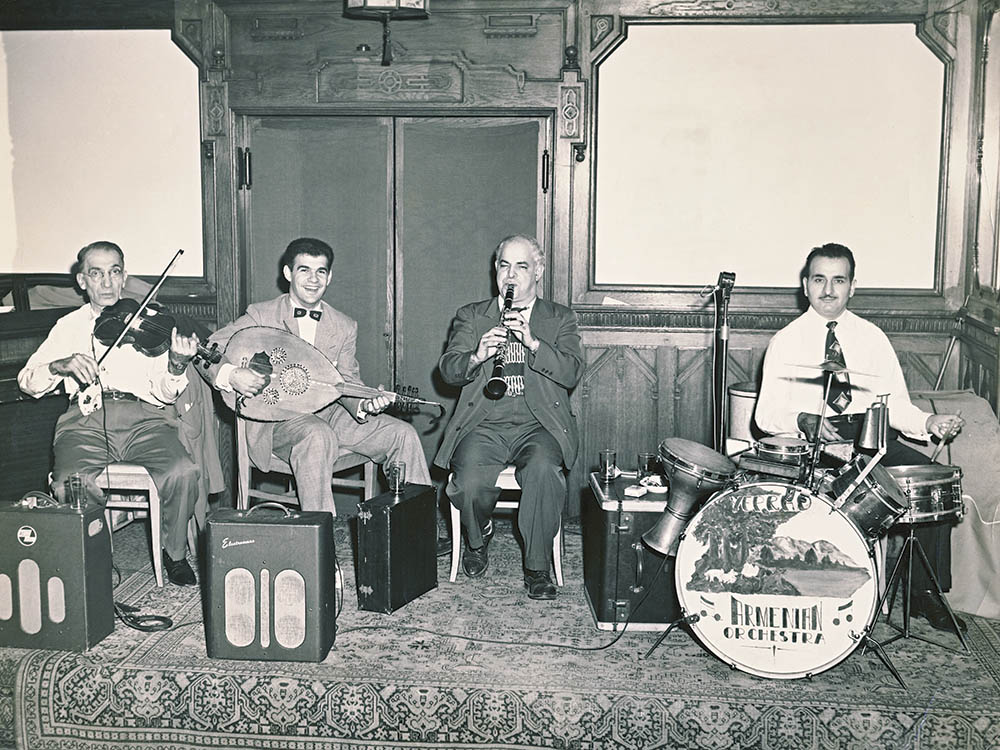
Photo: ASP Archive
Staff Report
In December 2019, the Armenian Studies Program was awarded a California Humanities grant of nearly $5,000 for the “Amplifying Community: Re-cording the History of the San Joaquin Valley Armenian Music Production,” project, dedicated to recovering the history of Armenian-American music production in the San Joaquin Valley during the first half of the 20th century.
Armenian Studies Program archivist Malina Zakian and Berberian Coordinator Prof. Barlow Der Mugrdechian successfully applied for the grant.
The Program has been collecting Armenian records donated by the community for more than thirty years and planned to make the recordings available for researchers and the public. Through the Grammy Museum Grant, the Program was able to inventory and catalog nearly 1,500 recordings on 78-rpm discs from the Armenian-American diaspora.
The Armenian Studies Program held its “Armenian-American Musical Heritage of the San Joaquin Valley,” event on February 29, 2020, in the University Business Center on the Fresno State campus. Members of the Fresno Armenian community came to campus with historic photographs, sheet music, promotional materials, and ephemera relating to Armenian music production for scanning. Between 100 to 125 photographs and musical scores were collected.
Drawing upon the reminiscences and expertise of local musicians, the “Amplifying Community” event provided a forum for the community to contribute their own recollections, photographs and ephemera.
These stories and images contextualized work already underway and supported through a grant from the Grammy Foundation, to preserve local 78 rpm recordings from the Armenian-American diaspora.
After the scanning event, oud master Richard Hagopian and Dr. Yektan Türkyilmaz had a discussion about the Armenian music of the San Joaquin Valley, which included a performance of traditional Armenian music by Hagopian. Hagopian shared his personal musical journey as well as recounting humorous anecdotes from throughout his life.
His fascination with the oud, a Middle Eastern pear-shaped string instrument, motivated him at a young age to learn from oud masters such as Oudi Hrant Kenkulian and Oudi Garbis Bakirgian. Hagopian later formed the well-known “Kef Time Band,” which has performed throughout the United States.
Both Hagopian and Dr. Türkyılmaz discussed how many village songs were “creatively edited” upon their arrival in the United States.
Sometimes, these edits could amount to ten different versions of a song based on each artist’s style. Another interesting point Hagopian highlighted was that sixty percent of Armenian songs were written with Turkish lyrics up until the 1960s.
Armenian musicians would frequently borrow Turkish melodies and rewrite them with Armenian verses. These lyrics often reflected the social conditions immigrants encountered in America.
For instance, the song, “Sheg Mazerov er” (She Had Blonde Hair), centers around the struggles of a musician searching for an Armenian wife in America.
Though Hagopian indicated that many Armenian musicians settled on the East Coast, the Fresno Armenian community has still fostered its own set of bands and musicians with their own distinct styles of playing. Dr. Türkyılmaz emphasized how Fresno was “one of the most densely populated Armenian settlements in America.”
Because of this rich history, many San Joaquin Valley residents like Hagopian developed their own stories about music and dancing events at Armenian coffeehouses and picnics.
The Program is pleased to announce that all of the materials from the scanning event have been digitized and are available to view on the Program website at the following link: https://archive.org/details/csufarmenianstudies?tab=collection.
 Hye Sharzhoom Armenian Action
Hye Sharzhoom Armenian Action